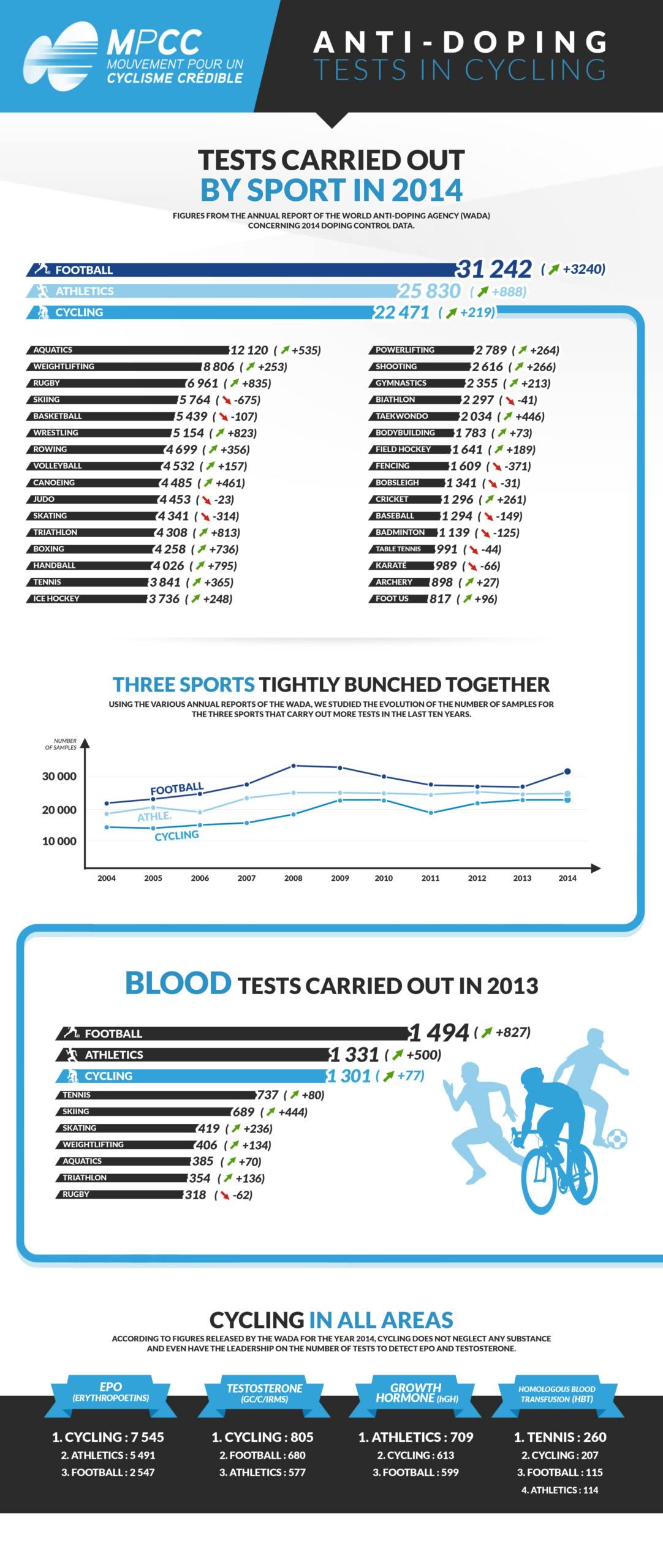Cycling still among the top three of an improving peloton
Football, athletics and cycling are the three sports doing the most meaningful work against doping in terms of quantity of tests performed each year. This trio has been the same for many years now – the fact that cycling is part of that leading bunch is remarkable if we compare the global number of athletes practicing these sports to a high level. According to a 2006 census conducted by the FIFA, there are 113,000 professional football players in the world. In contrast, only 1,200 cycling riders are pro all disciplines taken together. Contacted by MPCC, the IAAF was unable to provide a figure which would be used as a comparative element.
Having been the most growing sport in the number of tests performed in 2013, cycling reached its peak with 22,252 controls carried out over the entire year. That figure went even higher in 2014 (22,471 tests) but football emerged as the sport showing the largest increase with 3,240 additional tests compared to 2013.
Cycling was the only sport among the 2013 top five to have increased the number of tests, whereas football, athletics, swimming and weightlifting made fewer. In 2014 all those sports have resumed upward movement, as well as rugby – the 6th sport on the list. Though the number of tests performed was lower for 24 sports in 2013, they were only 11 remaining in 2014.
Cycling keeps the lead on EPO testing and now also on testosteron
In 2013 cycling was the only sport performing more than 1,000 blood tests, making it the leader in this specific fight. This figure continued to increase in 2014 (from 1,224 to 1,301) while other big sports achieved to catch up. Football carried out 827 more blood tests than in 2013, athletics 500, occupying now the top two positions ahead of cycling.
However cycling remains the sport which favours the most the qualitative side. As in 2013, cycling still is the leading sport on the screening of EPO. Cycling also achieved to pass ahead of athletics to become the sport which performs the largest number of testosteron tests.
A very clear increase of the number of growth hormone tests has been observed in all sports put together. Cycling is the second sport, behind athletics, with the largest number of growth hormone controls.
In 2013 athletics was the sport with the largest number of approved transfusion tests carried out. This sport now comes in fourth position. In this area tennis took a spectacular step and moved from the eighth rank to the first one. Cycling confirms its determination to leave nothing to chance by remaining in the second position. So cycling is the only sport to be among the top two in terms of tests performed for each of the four doping substances the most tested in sport : EPO, testosteron, growth hormone, homologous transfusion.
The antidoping struggle of cycling is intended to be both quantative and qualitative – not forgetting its pioneering role played in the implementation of ADAMS geolocalisation system (endorsed from its inception in 2005) and biological passport (endorsed from its inception too in 2008).

